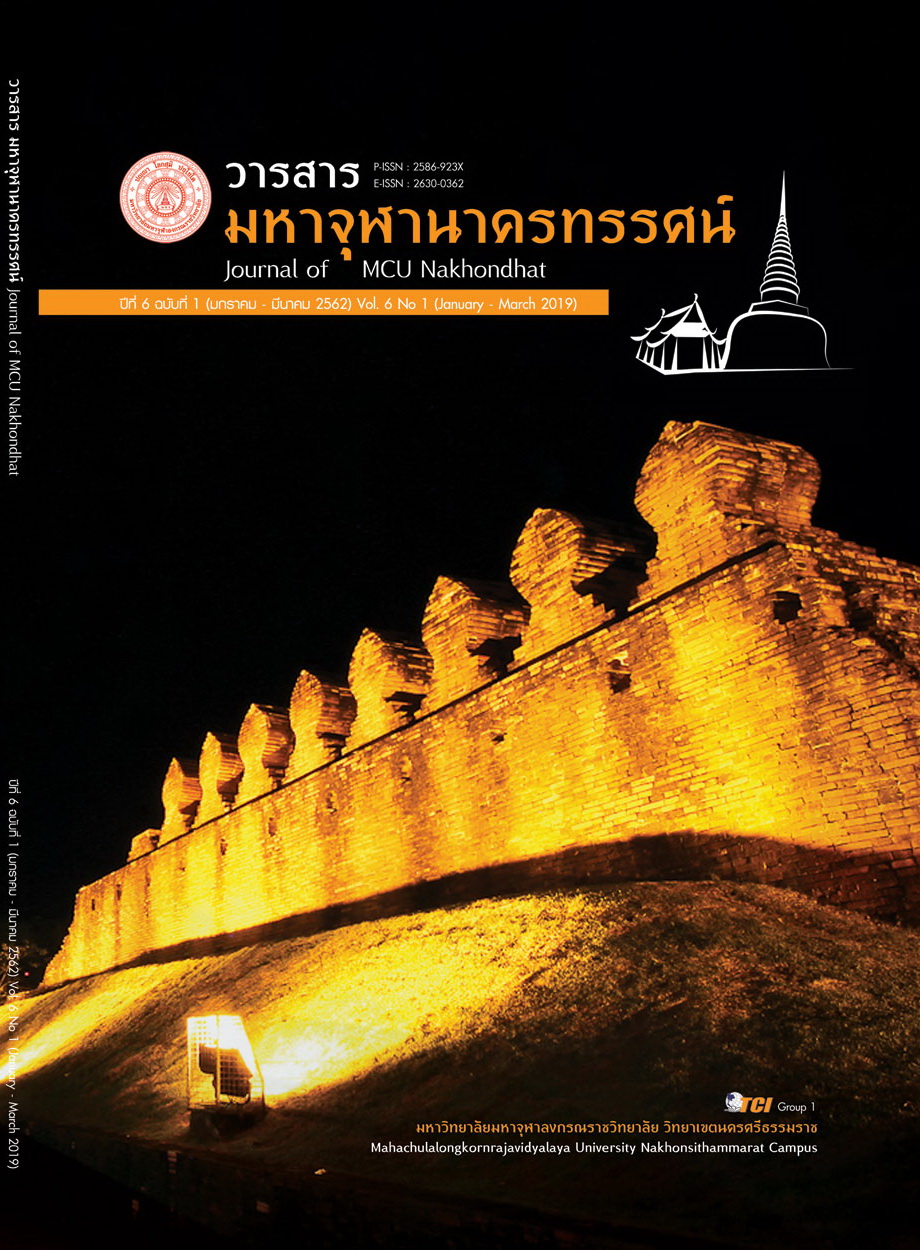THE INFLUENCE OF GENDER AND PERSONALITY DIFFERENCES ON DOMINANCE EMOTIONAL THAI WORDS AND PICTURE IN YOUNG ADULTS: BEHAVIORAL STUDY.
Main Article Content
Abstract
This experimental research aims to compare the influence of gender and personality differences on dominance emotional Thai words and picture in young adults, which is 2x2 Factorial Posttest Design. The participants were 80 undergraduates, aged between 20-24 years old, in 2017’s Burapha University academic year, divided in two personality groups; extrovert and ambivert. The materials are dominance emotional Thai words and picture, self–Assessment Manikin: SAM and the analytical technic is Two-Way ANOVA.
The results showed that;
The differences of gender are not influence to control and uncontrolled of Thai words and picture. The differences of personality are not influence to control and uncontrolled of Thai words and picture and There were no interaction between gender and personality of Thai words and picture in control and uncontrolled.
Article Details
References
ธวัชชัย ศรีพรงาม, เสรี ชัดแช้ม และสมพร สุทัศนีย์. (2558). การพัฒนาระบบคลังรูปภาพที่สื่อความหมายทางด้าน อารมณ์ความรู้สึกในบริบทของคนไทย. วิทยาการวิจัยและวิทยาการปัญญา, 13(2), 57-70.
พัชรี คุณค้ำชู. (2555). ประสาทวิทยาศาสตร์ประยุกต์. กรุงเทพมหานคร: สำนักพิมพ์มหาวิทยาลัยธรรมศาสตร์.
ราตรี สุดทรวง และวีระชัย สิงหนิยม. (2545). ประสาทสรีรวิทยา. กรุงเทพมหานคร: สำนักพิมพ์แห่งจุฬาลงกรณ์มหาวิทยาลัย.
Bradley, M. M., & Lang, P. J. (1994). Measuring emotion: The self-assessment manikin and the semantic differential. Journal of Behavior Therapy and Experimental Psychiatry, 25(1), 49-59.
Buechel, S., & Hahn, U. (2017). EMOBANK: Studying the Impact of Annotation Perspective and Representation Format on Dimensional Emotion Analysis. EACL 2017.
Feldman, R. S. (2013). Understanding psychology (11th ed.). New York: McGraw-Hill.
Cai, A., Lou, Y., Long, Q., & Yuan, J. 8. (2016). The sex differences in regulating unpleasant emotion by expressive suppression: extraversion matters. Frontiers in Psychology, 1011(7), 1011-1021.
Domes et al. (2010). The neural correlates of sex differences in emotional reactivity and emotion regulation. Human Brain Mapping, 31(5), 758-769.
Edmond, W.A., & Kennedy, T.D. (2017). An applied reference guide to research designs: Quantitative, qualitative, and mixed methods (2nd ed.). California: SAGE Publication .
Ferrarini et al. (2010). The emotional response to wine consumption. Food Quality and Preference, 21(7), 720-725.
Gard, M. G., & Kring, A. M. (2007). Sex differences in the time course of emotion. Emotion, 7(2), 429.
Kret, M. E., & De Gelder, B. (2012). A review on sex differences in processing emotional signals. Neuropsychologia, 50(7), 1211-1221.
Mehrabian, A. (1996). Pleasure-arousal-dominance: A general framework for describing and measuring individual differences in temperament. Current Psychology, 14(4), 261-292.
Santrock, J. W. (2003). Psychology: Essentials. Boston: McGraw-Hill.
Sood, S. O. (2008). Emotional computation in artificial intelligence education. ใน AAAI Artificial Intelligence Education Colloquium (หน้า 74-78).
Wood, S. E., Wood, E. G., & Boyd, D. . (2008). Mastering the world of psychology (3rd ed.). Massachusetts: Pearson.


